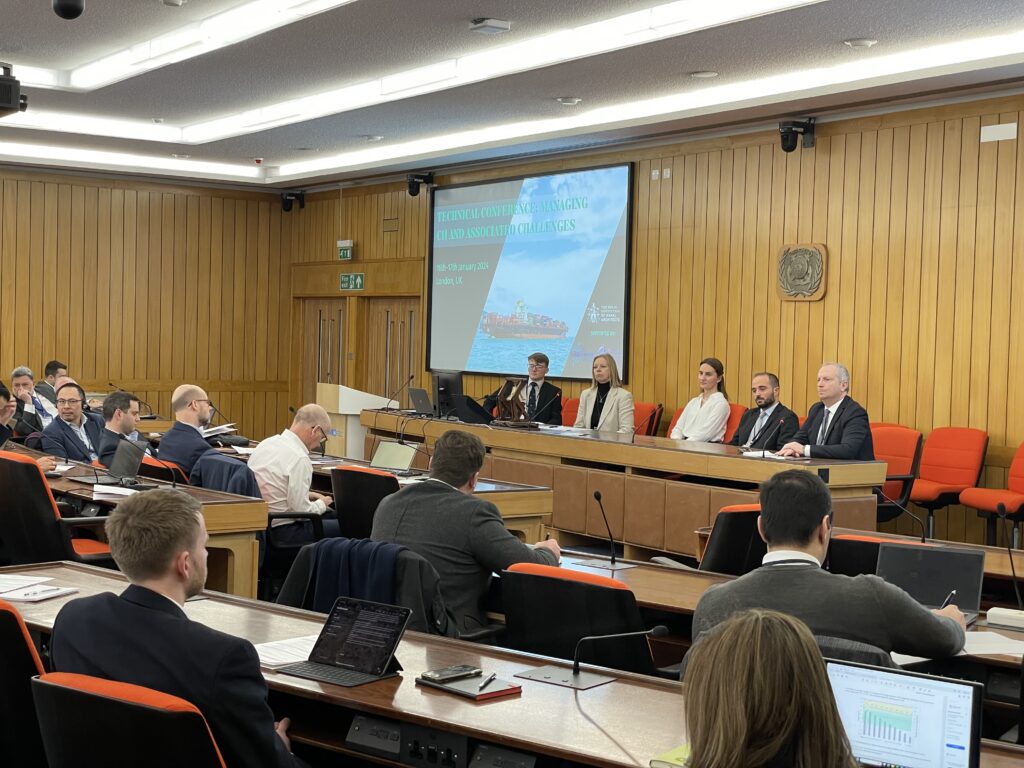Ardmore’s Energy Transition Analyst shares CII insights at RINA Conference
Back to newsArdmore’s Energy Transition Analyst, Oliwia Gałecka, recently participated in the Royal Institution of Naval Architects technical conference: “Managing CII and associated challenges”, which took place in London on the 16th – 17th January. Presenting a paper to delegates, Oliwia examined the potential impact of voyage optimization techniques on enhancing a vessel’s Carbon Intensity Indicator (CII) rating. Here, she shares her thoughts on the conference and the outcomes of discussions that took place over the two days.

As far as ringing in the new year goes, presenting at the IMO headquarters in London is not a bad way to start 2024. I had the privilege of speaking at the Royal Institution of Naval Architects technical conference, addressing the challenges of managing CII, which produced many fruitful discussions.
One of the keynote speeches, “The Good, The Bad and The Ugly” by the Mærsk Mc-Kinney Møller Center for Zero Carbon Shipping, and Edwin Pang, Founder at Arcsilea Ltd, took a pragmatic approach to the subject, expertly outlining the issues and challenges the industry faces in relation to CII ratings. The speech set a realistic tone for the next two days of discussions. We also heard from IMO representatives, who acknowledged the current problems with CII.
My presentation was titled “A case study examining the potential impact of employing robust voyage optimization techniques on enhancing a vessel’s CII rating” through which I shared results of an investigation into the approach Ardmore takes to voyage optimization and the effects these have on maintaining the fleet’s high CII ratings. I also delved into Ardmore’s vision for the future of voyage optimization.
Alongside other ship owners, I took part in a panel moderated by Ardmore board member, Kirsi Tikka, where the practical experience of CII was discussed and evaluated. It seemed the consensus of the panel was that there is an urgent need for clearer guidelines, and more work is required to make CII as impactful as intended.
Other speakers included representatives of research institutes, who forecast how CII may change the industry, as well as those from technology providers, showcasing how CII ratings could be improved.
The conference wrapped up with a workshop during which delegates were encouraged to share how we would improve current CII regulations. Dialogue during this session offered insight into how the current regulations affect each sector of the industry. Towards the end, once all the ideas were exchanged and discussed, delegates voted on the most popular ones, which will be presented as feedback during the next IMO proceedings – showcasing a broader selection of opinions around further improving regulations in the future.
Although clarity around CII is needed, I believe that by having these conversations, we are opening the door as an industry for more discussion and collaboration in the journey towards decarbonization – without which, we have no hope in achieving a sustainable marine energy transition.




